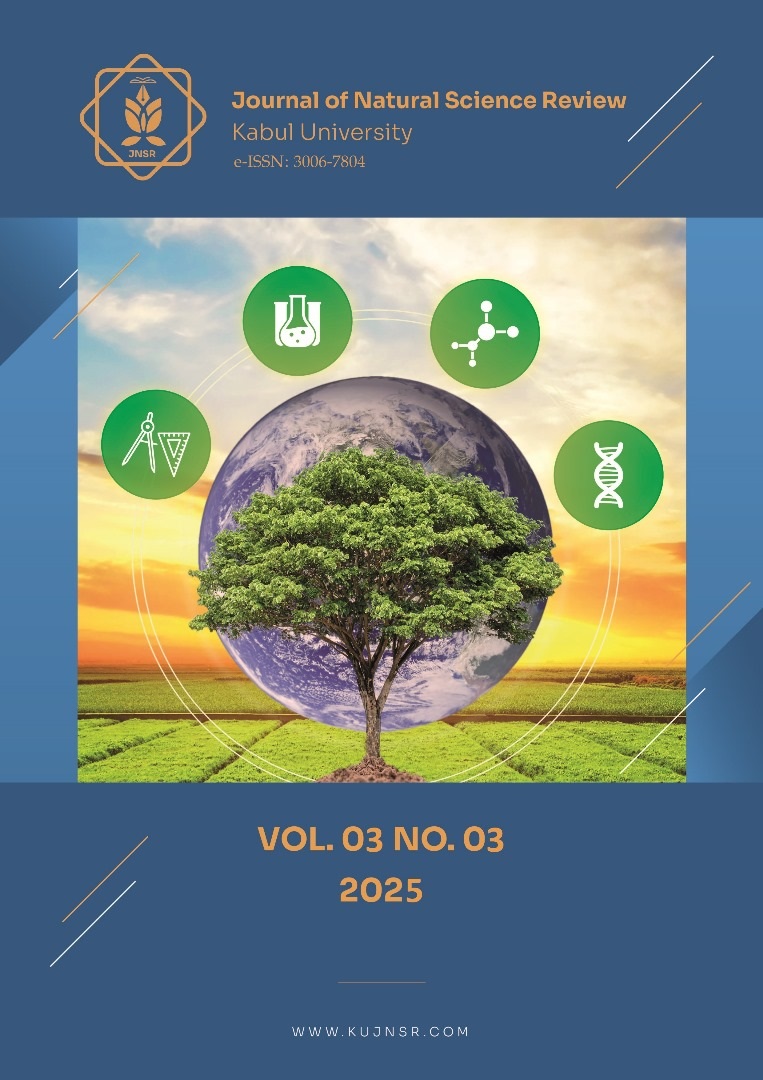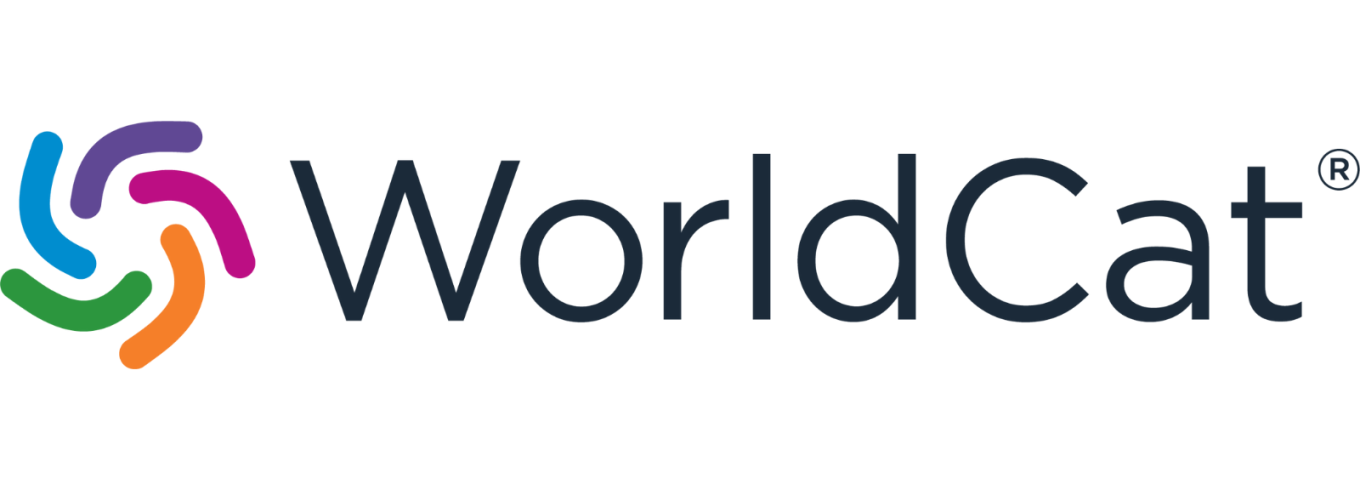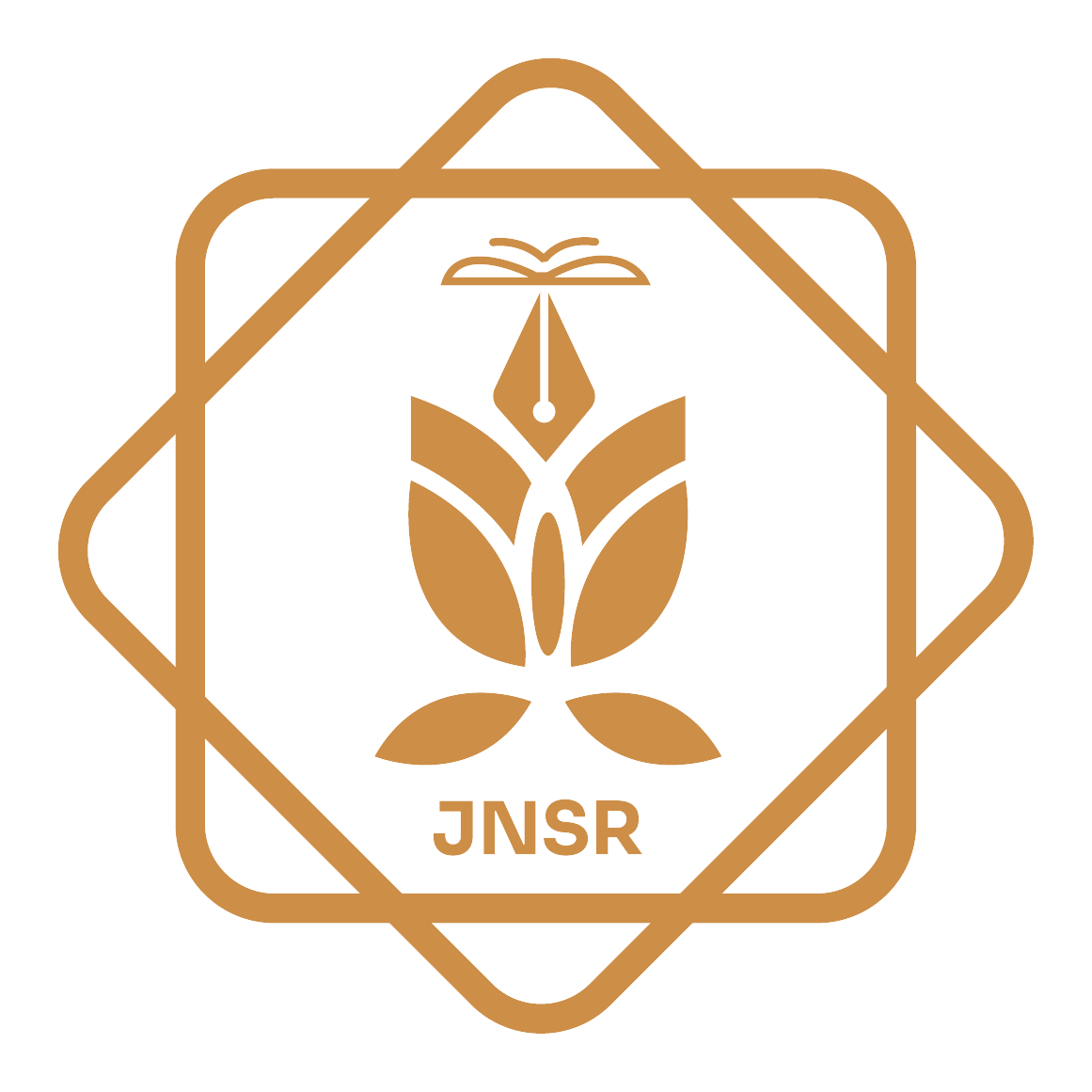Farm-Level Economic Assessment of Watermelon Production in Nangarhar Province
DOI:
https://doi.org/10.62810/jnsr.v3i3.229Keywords:
Cost and Net return, Nangarhar, Socio-Economics characteristics, WatermelonAbstract
Watermelon is a significant cash crop that provides a good source of income and contributes to employment generation in Nangarhar province. This research aims to analyze the socio-economic characteristics and cost and return of watermelon. This study was carried out in Nangarhar province. The research is quantitative in nature, utilizing both primary and secondary data A purposive sampling design was used to select a sample of 130 respondents for the survey. Primary data were collected through a well-structured questionnaire. Descriptive statistics and cost and return analysis were used for data analysis. The results revealed that the average age of the selected farms was 39 years, and the percentage of respondents was educated, which fortunately included a percentage of bachelor's degree holders. The majority of the respondents, 59.76 percent, are living in households. At the same time, 42.62 percent of the farmers had between 5 and 10 years of watermelon production experience, with an average of 7 years. Furthermore, approximately 78 percent of respondents have annual incomes exceeding $100,000. The cost and return analysis showed that the average per jerib cost for large-scale farmers (17,274 AF) is lower than that for medium-scale farmers (18,057 AF) and small-scale farmers (19,307 AF). Moreover, fertilizer costs constitute the highest proportion of total production costs across all categories. Based on per-jerib costs, the expenses associated with the Black Master variety amount to 22,505 AF, which is approximately 6,000 AF higher than the Extreme F1 variety. The average per-jerib yield in Nangarhar province is 855 man (7 Kg), generating a gross income of 40,117 AF and a net income of 21,904 AF. The study recommended the extreme F1 variety as it is more profitable in the study area.
Downloads
References
Ahmad, A., Prasad, R. L., Kumar, D., Singh, N., Prasad, V. M., & Paul, A. (2017). An economic analysis of production of watermelon in Allahabad District, Uttar Pradesh, India. International Journal of Advanced Education and Research, 2(4), 206–210. Link
Ahmadzai, M. Y., & Kaur, G. (2022). A comparative study on growth of agriculture sector: A case of Afghanistan. Brazilian Journal of Poultry Science, 24(2), 1–8.
https://doi.org/10.1590/1806-9061 2020 1412.
Food and Agriculture Organization of the United Nations. (2003). World agriculture: Towards 2015/2030: Summary report (J. Bruinsma, Ed.). Earthscan Publications Limited. Link
FAOSTAT. (2020, January 20). Watermelon production by country. Food and Agriculture Organization of the United Nations. Link
Jabar, A. F. J. I. A. (2021). An overview on impacts of agriculture–horticulture sub sector in Afghanistan’s economy. Academic Research in Educational Sciences, 2(10), 428–435. https://doi.org/10.24412/2181 1385 2021 10 428 435
Joshi, P. K., Joshi, L., & Birthal, P. S. (2006). Diversification and its impact on smallholders: Evidence from a study on vegetable production. Agricultural Economics Research Review, 19(2), 219–236. https://doi.org/10.22004/ag.econ.57759
Khaliq, A. J. A., & Boz, I. (2018). The role of agriculture in the economy of Afghanistan. In Proceedings of the 2nd International Conference on Food and Agricultural Economics (pp. 192–198). https://doi.org/10.18535/ijsrm/v6i10.em04 DOI: https://doi.org/10.18535/ijsrm/v6i10.em04
Ministry of Agriculture, Irrigation & Livestock (MAIL). (2021). Watermelon: Second fruit in terms of more production [Report]. Kabul, Afghanistan.
Mohammed, B. T. (2011). Socio economic analysis of melon production in Ifelodun Local Government Area, Kwara State, Nigeria. Journal of Development and Agricultural Economics, 3(8), 362–367. Link
Mujaju, C. (2009). Diversity of landraces and wild forms of watermelon (Citrullus lanatus) in Southern Africa (Introductory Paper No. 2009:3). Faculty of Landscape Planning, Horticulture and Agricultural Science.Link
National Statistics and Information Authority (NSIA). (2022). Afghanistan statistics yearbook (1401). Kabul, Afghanistan.
Ngbede, S. O., Nwanguma, E. I., Ibekwe, H. N., Onyegble, U. N., Okpara, S. C., & Uwalaka, O. A. (2014). Melon production in Nigeria. International Journal of Scientific and Technology Research, 3(9), 16–20. https://doi.org/10.59331/jasd.v4i4.257 DOI: https://doi.org/10.59331/jasd.v4i4.257
Prohens, J., & Nuez, F. (2008). Vegetables. In Handbook of plant breeding (1st ed., pp. 381–385). Springer. https://doi.org/10.1007/978-0-387-30440-3_17 DOI: https://doi.org/10.1007/978-0-387-74110-9
Reetu, V., & Tomar, M. (2017). Watermelon: A valuable horticultural crop with nutritional benefits. Popular Kheti, 5(2), 5–9. http://www.popularkheti.com
Tabe Ojong Jr, M. P., & Abay, K. A. (2023). Smallholder farmers’ participation in profitable value chains and contract farming: Evidence from irrigated agriculture in Egypt (Vol. 42). International Food Policy Research Institute. https://doi.org/10.2499/p15738coll2.136548 DOI: https://doi.org/10.2499/p15738coll2.136548
Toluwase, S. O. W., & Owoeye, R. S. (2017). Cost benefit analysis of watermelon production in Ekiti State, Nigeria. Russian Journal of Agricultural and Socio-Economic Sciences, 66(6), 307–314. https://doi.org/10.18551/rjoas.2017-06.36 DOI: https://doi.org/10.18551/rjoas.2017-06.36
World Bank. (2014). Islamic Republic of Afghanistan agricultural sector review: Revitalizing agriculture for economic growth, job creation and food security. World Bank.
Downloads
Published
How to Cite
Issue
Section
License
Copyright (c) 2025 Abdul Wahid Soltani, Muhammad Hassan Mohammadi, Mirwais Rasoli

This work is licensed under a Creative Commons Attribution-NonCommercial 4.0 International License.



























